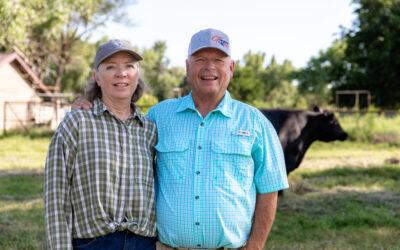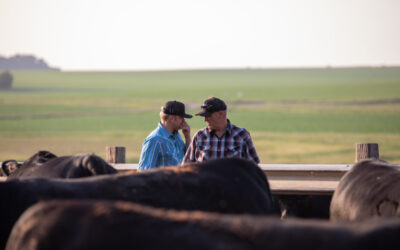
Full of good advice
April 28, 2011
7 nuggets of knowledge from this quarter’s AngusSource Carcass Challenge winner
Have you ever heard of Millersville, Mo., producer Mike Kasten?
If not, I must ask, “Where have you been?” Mike could be one of the most recognized commercial Angus producers in the country, making appearances on programs at the Cattle Industry Convention and Trade Show and the National Angus Tour.
And for good reason.
He has kept detailed carcass data for more than three decades. His cattle routinely grade at three and four times the national average for Certified Angus Beef ® and reach as much as 30 to 40% Prime. Timed AI (artificial insemination) has been one of his greatest tools for implementing change.
But why am I bringing him up today?
Well, this 2004 CAB Commercial Commitment to Excellence award winner hasn’t weakened. In fact, it’s his increased focus that has earned him the top spot in the first quarter of the 2011 AngusSource Carcass Challenge.
Irsik & Doll Feed Yard, a CAB partner near Garden City,Kan.,entered a group of 38 head of AngusSource-tagged steers from Kasten and his cooperators. They made 81.6% CAB and Prime. More than 26% of the group was in the top grade—that’s compared to just over 3% for a national average.
Anybody with those results surely has some tricks of the trade, so I scanned some past stories to see what nuggets of wisdom we might learn from Mike:
- “We’d like to get as much carcass as possible without sacrificing anything else. With the Angus breed, there are so many to pick from, so that’s not hard to do. We try to use proven bulls and try to get bulls that produce really nice females that work for us.”
- “We’ve always used bulls with positive carcass, but now we’re trying to stack it even harder. The Prime premium has nothing but potential as demand continues to grow for that product.”
- “The more you work with the genetics of your herd, the longer you have to own your cattle to make it pay.” (He retains ownership at Irsik & Doll.)
- “I always like trying something new as long as it is reasonable.”
- “We work hard to get our cattle bred with the best proven genetics, and getting in there with AI gives us more consistency and quality in our cattle.”
- “I believe that there are a lot of good cattle out there today, but few people can prove it. I have always believed in records, because you can prove what you have.”
- “You’re leaving a lot of money on the table if you don’t use [AngusSource].”
Research proves that last comment is right. Records from eight video sales last year showed AngusSource-tagged cattle brought $2.58/cwt. more than non-verified calves.
It’s no wonder feeders are willing to bid them up. We know a tag doesn’t guarantee quality, but last year more than 3,000 head of AngusSource enrolled cattle were fed at CAB-licensed feedyards. They surpassed 55% brand acceptance—more than double the whole population of the database. Do you have cattle that could qualify for this quarterly contest? If you feed at a CAB-licensed yard, be sure to ask the manager about entering. It’s free and could be worth a $500 grand prize.May your bottom line be filled with black ink,
~Miranda
You may also like
Helping Hands, Helping Herds
“When I die, I want to come back as one of your cows,” murmurs a friend to Steve Zybach. Full to the brim from an alfalfa ration every day, bountiful fields of lovegrass stretched out across the Texas Panhandle—and owners who leave no ounce of cattle care up for question. The Zybachs’ motivation for this level of dedication to their Angus cattle is simply love.
System Over Scale
For Dallas Knobloch, it’s not about being the biggest feedyard—it’s about building a high-quality system that works. Today, with Tory’s wife Sadie and daughter Ivy, the Knobloch family owns and operates 4K Cattle. They feed 2,500 cattle at eight locations within 10 miles of home, manage 1,000 acres of crops and run a 125-head cow herd, all near Hills, Minn.
Data-Driven Progress and Partnerships
Discussions at Feeding Quality Forum reaffirmed the industry’s commitment to quality, transparency and innovation. With record Prime rates and strong consumer demand, producers who invest in genetics, health and relationships are positioned to drive progress and capture premiums.



